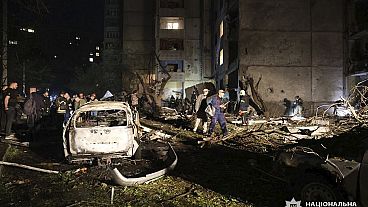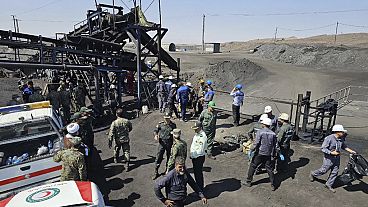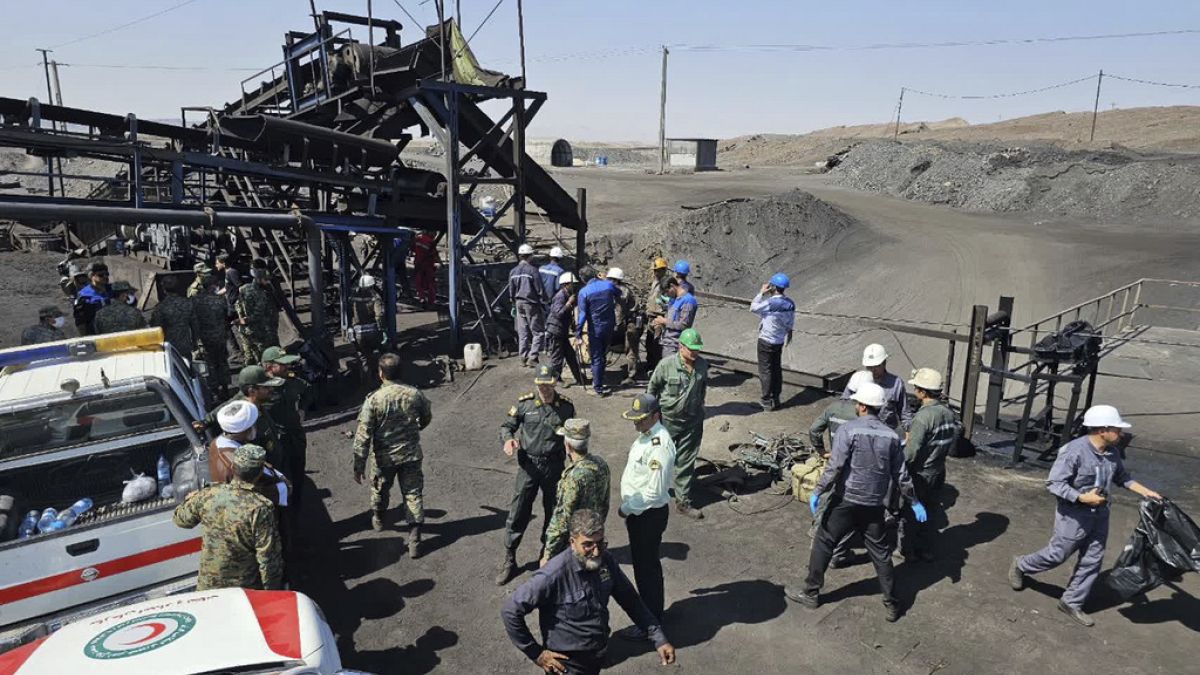A rescue effort is underway as 17 miners are believed to be trapped in the mine's tunnels at a depth of 200 metres below the surface.
The explosion at the coal mine in Tabas in eastern Iran on Saturday night killed at least 52 workers and injured 17 others, state media said, making it one of the worst mining disasters in the country's history.
A search and rescue operation was also underway for 11 miners who are missing, and believed to be trapped in tunnels 200 metres below the surface.
Video posted online showed weeping miners stood alongside mine cars that brought up the bodies of their colleagues, all covered in coal dust.
Around 70 people had been working at the time of the blast. State television later said that 17 were believed to be trapped at a depth of 200 metres down a 700-metre tunnel. However, figures kept changing throughout Sunday regarding the disaster in the rural area with some reports suggesting the death toll was higher.
Authorities blamed the blast on a leak of methane gas. Such gases are common in mining, though modern safety measures call for ventilation and other measures to protect workers.
It wasn't immediately clear what safety procedures were in place at the privately owned Mandanjoo Co., which operated the Tabas Parvadeh 5 mine.
Iran’s new reformist President Masoud Pezeshkian, preparing to travel to New York for the U.N. General Assembly, said that he ordered all efforts be made to rescue those trapped and aid their families. He also said an investigation into the explosion had begun.
“I spoke with the ministers of health, interior and security and ordered that the issues of the families of the victims and the injured be quickly resolved,” Pezeshkian said, according to a statement from his office. “I also requested to take measures to prevent the recurrence of such incidents by improving work standards in the country’s mines.”
But Iran’s mining industry has been struck by disasters before. In 2017, a coal mine explosion killed at least 42 people. Then-President Hassan Rouhani, campaigning ahead of winning re-election, visited the site in Iran’s northern Golestan province and angry miners besieged the SUV he rode in, kicking and beating the armoured vehicle in a rage.
In 2013, 11 workers were killed in two separate mining incidents. In 2009, 20 workers were killed in several incidents. Lax safety standards and inadequate emergency services in mining areas were often blamed for the fatalities.
Oil-producing Iran is also rich in a variety of minerals. Iran annually consumes around 3.5 million tons of coal, but only extracts about 1.8 million tons from its mines per year. The rest is imported, often consumed in the country’s steel mills.












